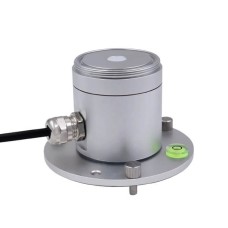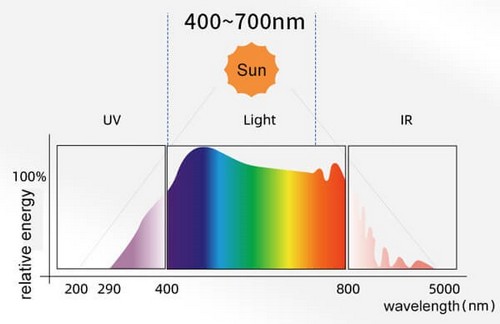For Downloads | ||
| Setup Software | Testing Software |
For Purchase | Call / WhatsApp / Telegram: +91 8148834200 | |
For Technical Support | Call / WhatsApp / Telegram: +91 8148834211 | |
This par sensor can be used alone for outdoor
monitoring of radiation driving photosynthesis, or it can be used with a fixed
weather station. Get accurate and cost-effective measurements of
photosynthetically active radiation (PAR) from all light sources used to grow
plants.

Photosynthetically active
radiation sensors are designed to measure light intensity at frequencies
associated with photosynthesis. This par sensor has a measurement range of 0 to
2500 umol/m2/sec and a wavelength range of 400 to 700 nm. All aluminum shell material,
good waterproof, can be used outdoor for long-term monitoring. Provide you with
RS485/0-5V/0-10V/4-20mA and other signal output methods.
PAR Sensor Features
The PAR (photosynthetically active radiation)
sensor adopts the principle of photoelectric induction. The par sensor working
principle: when there is light, a voltage signal proportional to the intensity
of the incident radiation is generated, and its sensitivity is proportional to
the cosine of the direct angle of the incident light. This par sensor uses
high-precision photoelectric sensing elements, with high absorption in the
400-700nm spectral range and good stability. The shell adopts special treatment
to reduce dust adsorption and effectively prevent the external environment from
damaging the internal components. It is widely used in the research of
meteorology, agriculture, air pollution, and other fields.
Why Choose PAR Sensor?
High accuracy
The
built-in sensor adopts high-precision photoelectric sensing element, which has
high spectral responsivity and sensitive response to the spectrum of 400~700nm.
A high-quality cosine corrector is used to ensure a standard cosine response,
which greatly reduces the measurement error.
Long using life
The
overall housing of the Renke PAR sensor is made of a special aluminum alloy
that will not accumulate dust and rain. This keeps the sensor clean and
minimizes errors caused by dust blocking the radiation path. It can also work
normally in harsh environments.
Remote monitoring
The par
sensor can be connected to the customer’s own data device. Easily access data
remotely, so you can view data through computer/APP anytime, anywhere. Accurate
indoor/outdoor PAR measurement.
Parameters - PAR Sensor
|
Power supply |
7V~30V DC |
|
Output signal |
RS485/4~20mA/0-5V/0-10V |
|
Power consumption |
485 output: 0.06W,
4~20mA/0~5V/0~10V: 0.7W |
|
Working temperature |
-30℃~75℃ |
|
Response spectrum |
400nm~700nm |
|
Measuring range |
0~2500μmol/㎡·s |
|
Resolution |
1μmol/㎡·s |
|
Accuracy |
±5%(1000umol/㎡·s, @550nm,60%RH,25℃) |
|
Response time |
0.1s |
|
Linearity |
≤±1% |
|
Annual stability |
≤±2% |
|
Place of origin |
China |

Parameters - PAR Sensor
Here are
some frequently asked questions about photosynthetically active radiation
sensors, Hope they can help you.
How to install this photosynthetic
active radiation sensor?
- Secure the sensor to the
mounting bracket using screws through the mounting holes on the sensor
- Make sure the device is
parallel to the ground (adjust the hand screw and check the level of the
bubble to determine whether it is parallel)
- After installation, remove
the protective cover
What is Photosynthetically Active
Radiation?
The spectral components of solar radiation that are
effective for plant photosynthesis are called photosynthetically active
radiation, with a wavelength range of 380-710 nanometers, which basically
coincides with visible light. The proportion of photosynthetically active
radiation in the direct solar radiation increases with the increase of the
sun’s altitude angle, up to 45%. In the scattered radiation, the proportion of
photosynthetically active radiation can reach as much as 60~70%.
Can PAR be estimated from total
shortwave radiation?
It is
better to measure PAR and total shortwave radiation (PYR); however, PAR can be
estimated from total shortwave radiation by using a physically-based model.
Photosynthetic Active Radiation Solar Light PAR Sensor
- Product Code:
- Availability: Out Of Stock
-
Rs.8,000.00
Tags: photosynthetic, active, radiation, solar, light, par, sensor



